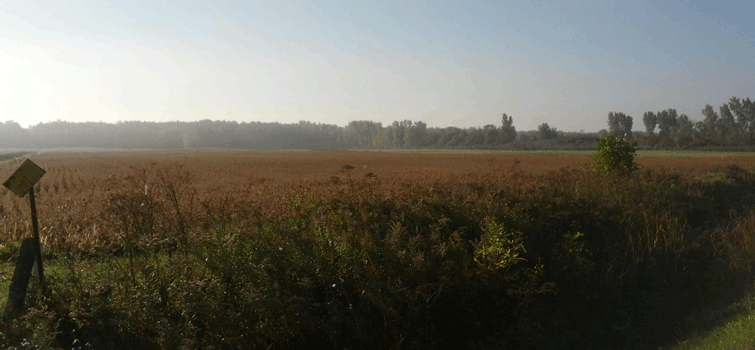Scarinci Hollenbeck, LLC
The Firm
201-896-4100 info@sh-law.comFirm Insights
Author: Scarinci Hollenbeck, LLC
Date: March 2, 2015
The Firm
201-896-4100 info@sh-law.com
Given the limited resources, it will be difficult to please everyone.
Last year, New Jersey voters approved a constitutional amendment that dedicates four percent of Corporation Business Tax revenue each year for a number of environmental programs, including open space, farmland, historic preservation, water programs, public and private site remediation, and underground storage tank programs. The allocation for the preservation of open space, farmland, and historic sites will increase to six percent in fiscal year 2020.
The new program, which will remain in place for the next 30 years, ended the previous tax scheme under which four percent of corporate tax revenue was set aside for environmental programs. It also increased the allocation of funds for the preservation of open space, farmland, historic sites and flood prone areas to 71 percent of the dedicated funds starting in FY 2016 and 78 percent starting in FY 2020. Open space preservation programs previously relied on a series of bond acts to fund the Garden State Preservation Trust Fund, which has since been depleted.
While the constitutional amendment ensures continued funding, all of the programs will experience deep funding cuts under the new scheme put in place by the constitutional amendment. As recently detailed by NJ Spotlight, open space preservation funds will decrease from more than $200 million to $71 million annually for the next 4 years and then increased to $121 million for successive years. Accordingly, interested parties, from the State Board of Agriculture to non-profit organizations dedicated to urban renewal, all have a vested stake in how the funds are allocated. The programs anticipated to experience the most significant cuts include water programs, site remediation, and land use regulation programs.
To implement the constitutional amendment and divvy up the funds, state lawmakers recently introduced the “New Jersey Farmland, Open Space, and Historic Preservation Act” (Assembly Bill 4197). Pursuant to the proposed measure:
With respect to the Green Acres program funding, 41 percent would be further allocated to State open space acquisition and development projects; 50 percent would be designated for grants and loans to fund local government open space acquisition and development projects; and 9 percent would be used for grants to fund open space acquisition and development projects undertaken by qualifying tax exempt nonprofit organizations.
No Aspect of the advertisement has been approved by the Supreme Court. Results may vary depending on your particular facts and legal circumstances.

Crypto investor protection continues to evolve, with the SEC and CFTC investing resources and coordinating more closely to uphold regulatory standards. Whether you’re a retail investor, an institutional trader, or part of a crypto startup, understanding enforcement trends is essential for navigating this dynamic and high-stakes regulatory environment. Crypto Is No Longer the Wild West […]
Author: Dan Brecher

A Settled Regulatory Environment Enables Confident Capital Planning New Jersey’s new manufacturing incentive program, Next New Jersey Manufacturing Program, enters 2026 with something uncommon in economic development these days: policy stability. The statute is enacted, New Jersey Economic Development Authority’s (“NJEDA”) rules are adopted, and the application portal is open. With the election outcome settled, […]
Author: Michael J. Sheppeard

When done successfully, industry roll-up acquisitions can dramatically grow and strengthen your business. In this post, we break down what an industry roll-up is, why companies pursue it, and what makes it an effective (and sometimes risky) business strategy. What Is an Industry Roll-Up Acquisition? In an industry roll-up acquisition of companies, a buyer acquires multiple companies […]
Author: Dan Brecher

The federal government has launched one of the most ambitious scientific initiatives in decades, and it will redefine how companies develop technology, manage risk, and compete. The Genesis Mission, created by Executive Order and driven by the Department of Energy (“DOE”), is intended to accelerate scientific discovery through a national AI platform that links supercomputers, […]
Author: Michael J. Sheppeard

Stablecoins Leave the Grey Zone Stablecoins were supposed to be the “boring” part of crypto: digital dollars that just work. Yet for years they have lived in a regulatory no-man’s-land, classified one day as securities, the next as commodities, and sometimes as something regulators had not even named yet. That uncertainty is finally starting to […]
Author: Bryce S. Robins

If you operate a business without the proper license, you risk fines, insurance issues, reputational harm, and even business closure. Even innocent mistakes, like forgetting to renew a license, can have significant consequences, such as losing your lawsuit for payment of services that are unlicensed, which makes it imperative to have business license management procedures […]
Author: Dan Brecher
No Aspect of the advertisement has been approved by the Supreme Court. Results may vary depending on your particular facts and legal circumstances.
Consider subscribing to our Firm Insights mailing list by clicking the button below so you can keep up to date with the firm`s latest articles covering various legal topics.
Stay informed and inspired with the latest updates, insights, and events from Scarinci Hollenbeck. Our resource library provides valuable content across a range of categories to keep you connected and ahead of the curve.
Let`s get in touch!
Sign up to get the latest from the Scarinci Hollenbeck, LLC attorneys!